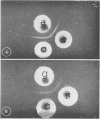Abstract
A radioimmunoassay for the binding protein for vitamin D and its metabolites (DBP) has been developed. Suitable rabbit anti-DBP antiserum was elicited after primary and one booster injection. Anti-DBP antisera, as well as antigroup-specific component antisera, produced a single, monospecific line of percipitation when reacted against purified DBP and human serum. DBP was iodinated with 125I and 125I-DBP was purified by gel filtration on Sephadex G-200. Binding of 125I-DBP by 20 nl of rabbit anti-DBP antisera was approximately 50% and was sharply competed for by 0.4-4.0 ng of DBP standard. Displacement of 125I-DBP by human serum dilutions or standard DBP gave identical curves, and only weak competition was observed with old and new world primate sera. Apo- and holo-DBP possessed indistinguishable immunoreactivity. The assay detects DBP in 1-10 nl of human serum with reasonable accuracy and with reasonable intra- and interassay precision. The mean serum concentration (+/- SEM) for a group of 40 normal adults was 525 +/- 24 mug/ml and no sex difference was observed. Higher levels were found in sera from pregnant women and women receiving oral contraceptives, and decreased concentrations were observed in premature cord and hypoproteinemic sera. No significant correlation between serum DBP levels and serum 25-hydroxycalciferol levels was found, and the DBP content of sera from vitamin D-deprived and vitamin D-treated subjects was indistinguishable from that of normal adults. DBP accounts for 6- of the alpha globulin in normal human serum. Considering the normal serum content of the parent vitamin and its metabolites to be approximately 0.1-0.2 mum, these immunoassay data confirm previous saturation analyses of human serum antiricketic sterol-binding capacity and suggest that greater than 95% of DBP circulates as the apoprotein under normal conditions.
Full text
PDF
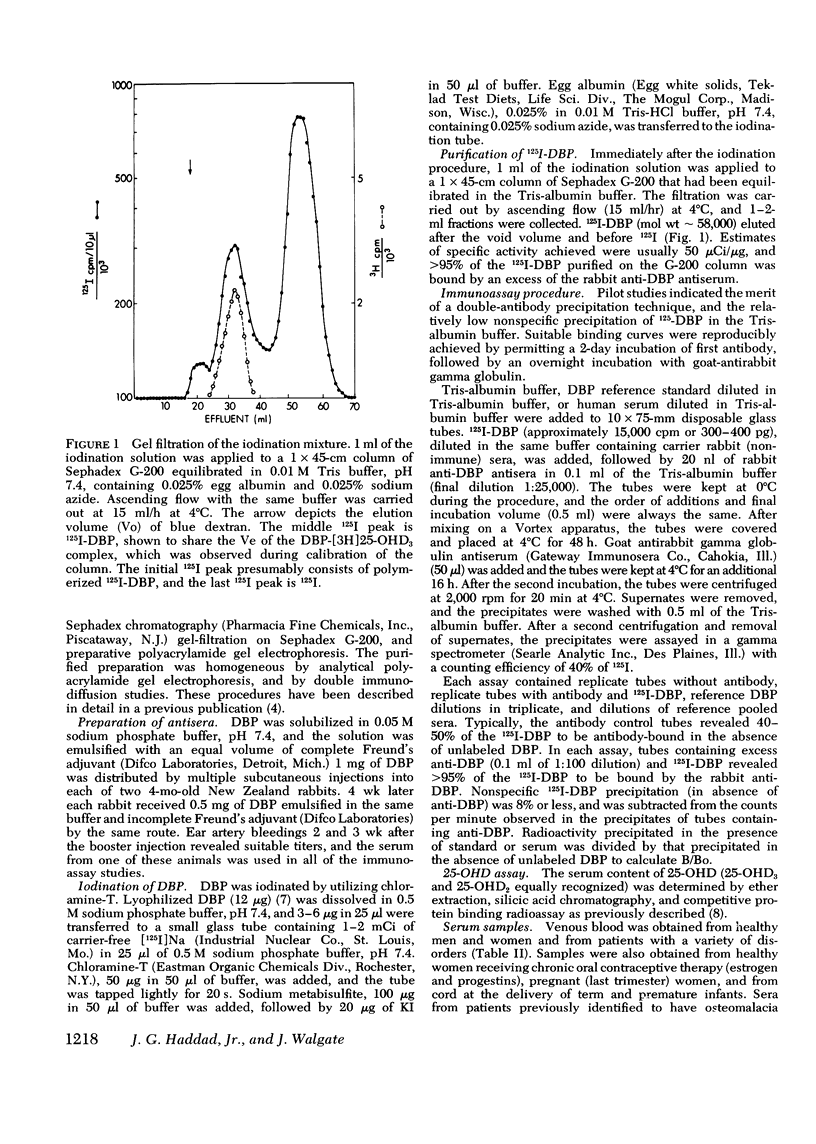
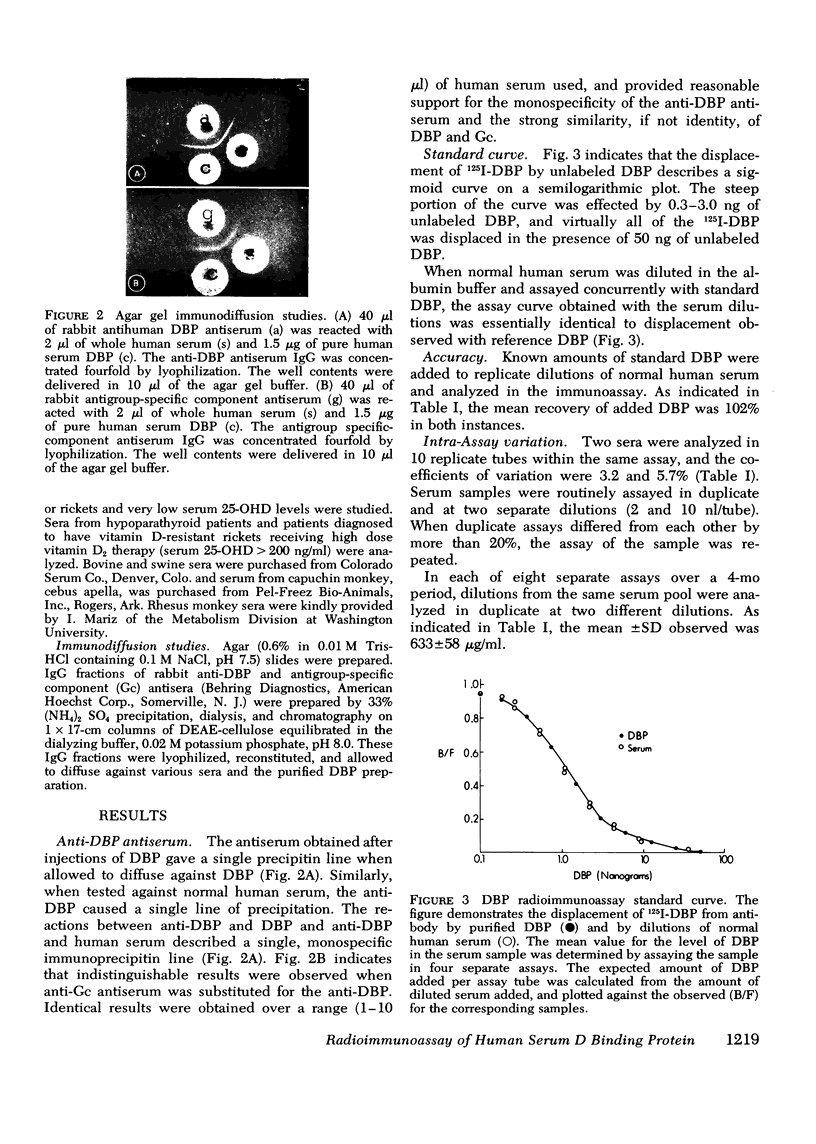

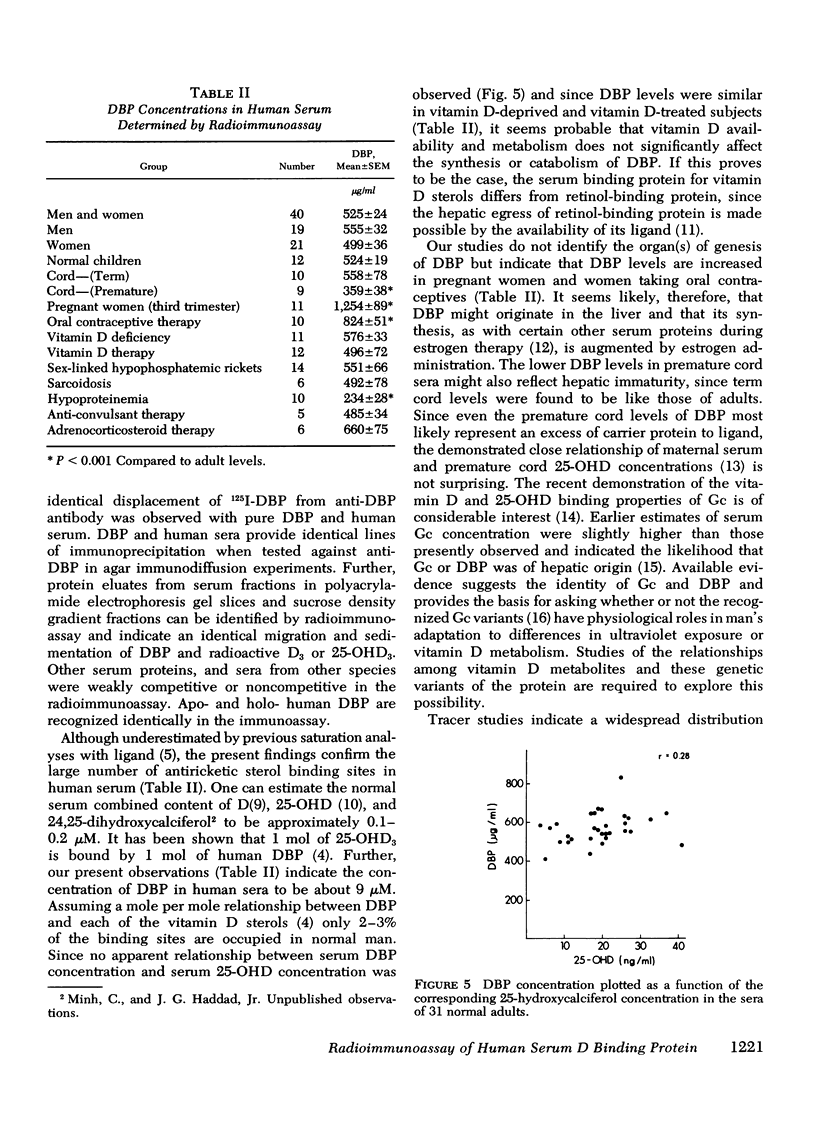
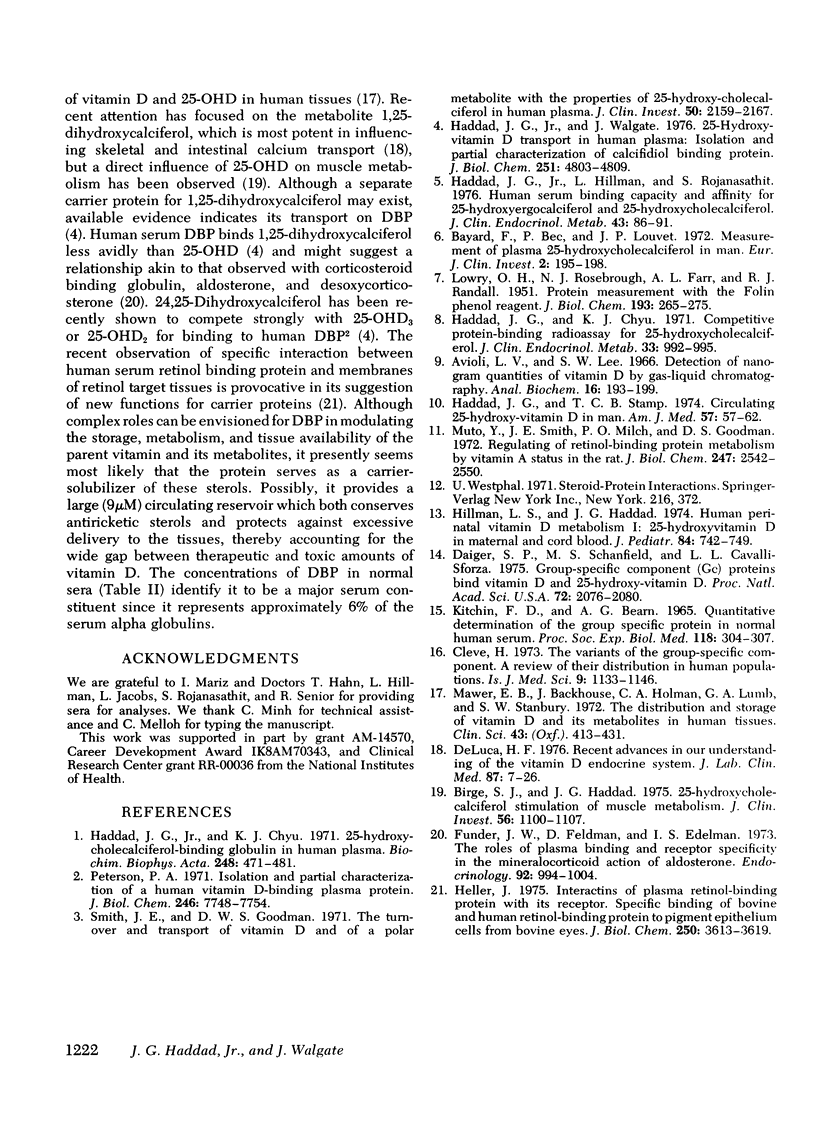
Images in this article
Selected References
These references are in PubMed. This may not be the complete list of references from this article.
- Avioli L. V., Lee S. W. Detection of nanogram quantities of vitamin D by gas-liquid chromatography. Anal Biochem. 1966 Aug;16(2):193–199. doi: 10.1016/0003-2697(66)90146-1. [DOI] [PubMed] [Google Scholar]
- Bayard F., Bec P., Louvet J. P. Measurement of plasma 25-hydroxycholecalciferol in man. Eur J Clin Invest. 1972 Jun;2(4):195–198. doi: 10.1111/j.1365-2362.1972.tb00644.x. [DOI] [PubMed] [Google Scholar]
- Birge S. J., Haddad J. G. 25-hydroxycholecalciferol stimulation of muscle metabolism. J Clin Invest. 1975 Nov;56(5):1100–1107. doi: 10.1172/JCI108184. [DOI] [PMC free article] [PubMed] [Google Scholar]
- Cleve H. The variants of the group-specific component. A review of their distribution in human populations. Isr J Med Sci. 1973 Sep-Oct;9(9):1133–1146. [PubMed] [Google Scholar]
- Daiger S. P., Schanfield M. S., Cavalli-Sforza L. L. Group-specific component (Gc) proteins bind vitamin D and 25-hydroxyvitamin D. Proc Natl Acad Sci U S A. 1975 Jun;72(6):2076–2080. doi: 10.1073/pnas.72.6.2076. [DOI] [PMC free article] [PubMed] [Google Scholar]
- Haddad J. G., Chyu K. J. Competitive protein-binding radioassay for 25-hydroxycholecalciferol. J Clin Endocrinol Metab. 1971 Dec;33(6):992–995. doi: 10.1210/jcem-33-6-992. [DOI] [PubMed] [Google Scholar]
- Haddad J. G., Hillman L., Rojanasathit S. Human serum binding capacity and affinity for 25-hydroxyergocalciferol and 25-hydroxycholecalciferol. J Clin Endocrinol Metab. 1976 Jul;43(1):86–91. doi: 10.1210/jcem-43-1-86. [DOI] [PubMed] [Google Scholar]
- Haddad J. G., Jr, Walgate J. 25-Hydroxyvitamin D transport in human plasma. Isolation and partial characterization of calcifidiol-binding protein. J Biol Chem. 1976 Aug 25;251(16):4803–4809. [PubMed] [Google Scholar]
- Haddad J. G., Stamp T. C. Circulating 25-hydroxyvitamin D in man. Am J Med. 1974 Jul;57(1):57–62. doi: 10.1016/0002-9343(74)90768-2. [DOI] [PubMed] [Google Scholar]
- Heller J. Interactions of plasma retinol-binding protein with its receptor. Specific binding of bovine and human retinol-binding protein to pigment epithelium cells from bovine eyes. J Biol Chem. 1975 May 25;250(10):3613–3619. [PubMed] [Google Scholar]
- Hillman L. S., Haddad J. G. Human perinatal vitamin D metabolism. I. 25-Hydroxyvitamin D in maternal and cord blood. J Pediatr. 1974 May;84(5):742–749. doi: 10.1016/s0022-3476(74)80024-7. [DOI] [PubMed] [Google Scholar]
- KITCHIN F. D., BEARN A. G. QUANTITATIVE DETERMINATION OF THE GROUP SPECIFIC PROTEIN IN NORMAL HUMAN SERUM. Proc Soc Exp Biol Med. 1965 Feb;118:304–307. doi: 10.3181/00379727-118-29827. [DOI] [PubMed] [Google Scholar]
- LOWRY O. H., ROSEBROUGH N. J., FARR A. L., RANDALL R. J. Protein measurement with the Folin phenol reagent. J Biol Chem. 1951 Nov;193(1):265–275. [PubMed] [Google Scholar]
- Mawer E. B., Backhouse J., Holman C. A., Lumb G. A., Stanbury S. W. The distribution and storage of vitamin D and its metabolites in human tissues. Clin Sci. 1972 Sep;43(3):413–431. doi: 10.1042/cs0430413. [DOI] [PubMed] [Google Scholar]
- Muto Y., Smith J. E., Milch P. O., Goodman D. S. Regulation of retinol-binding protein metabolism by vitamin A status in the rat. J Biol Chem. 1972 Apr 25;247(8):2542–2550. [PubMed] [Google Scholar]
- Peterson P. A. Isolation and partial characterization of a human vitamin D-binding plasma protein. J Biol Chem. 1971 Dec 25;246(24):7748–7754. [PubMed] [Google Scholar]
- Smith J. E., Goodman D. S. The turnover and transport of vitamin D and of a polar metabolite with the properties of 25-hydroxycholecalciferol in human plasma. J Clin Invest. 1971 Oct;50(10):2159–2167. doi: 10.1172/JCI106710. [DOI] [PMC free article] [PubMed] [Google Scholar]



